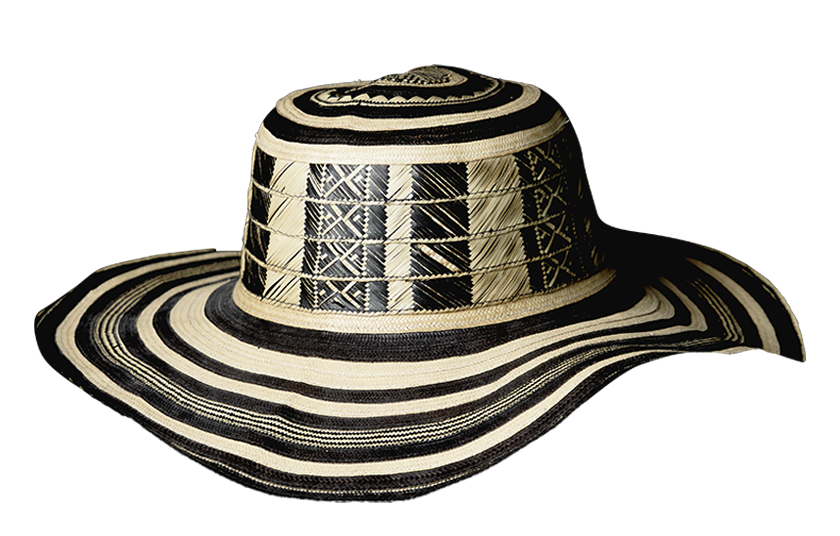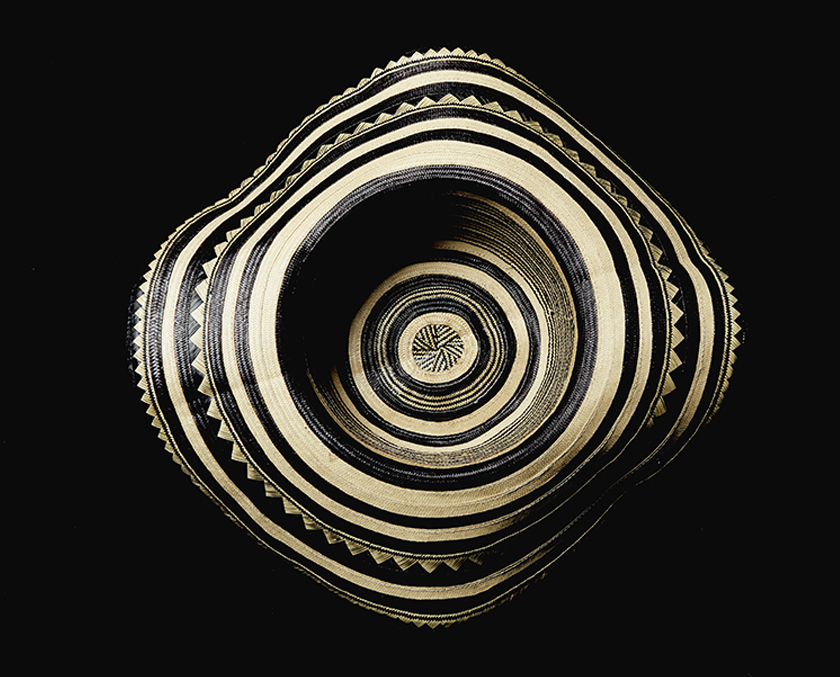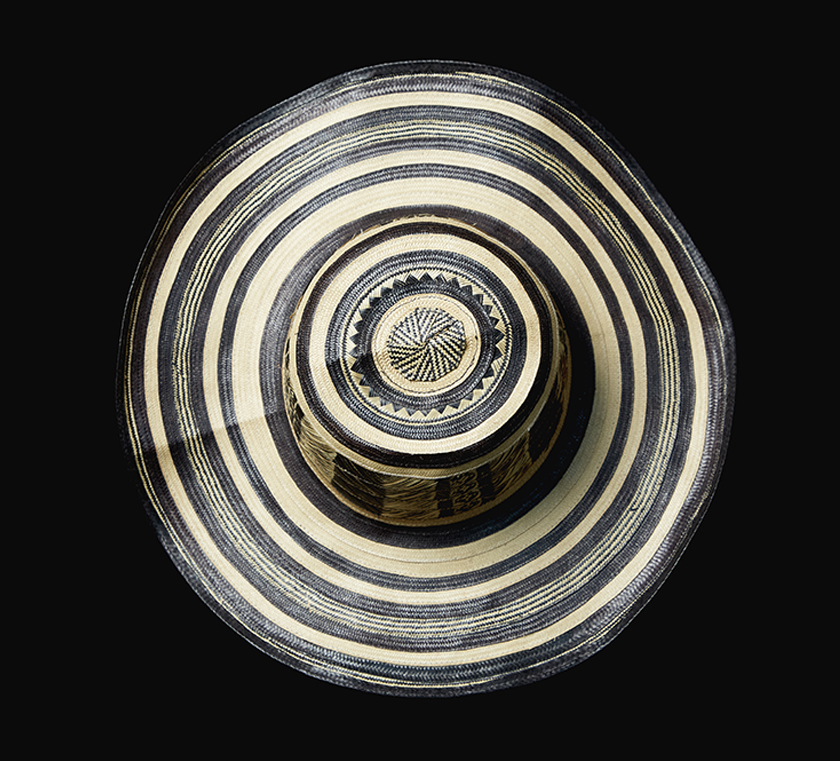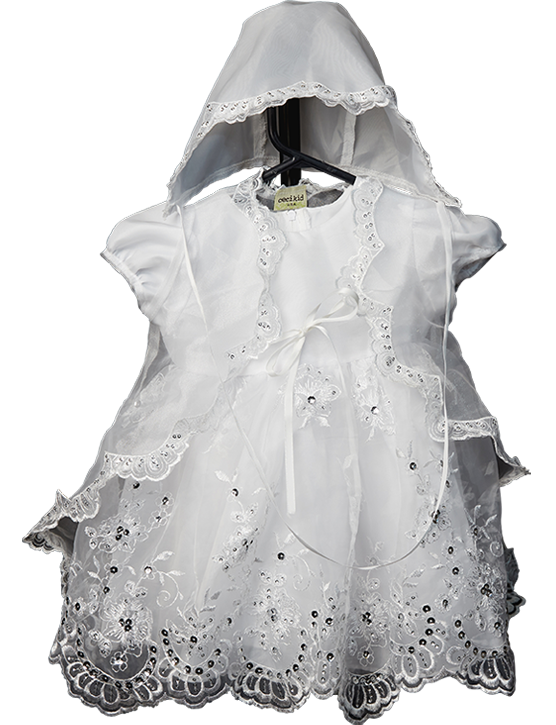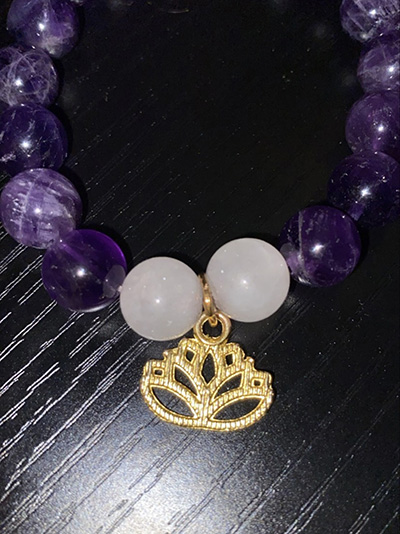Sombrero Vueltiao
ABOUT
This sombrero (hat) is from the South American country, Colombia. Historically, the principal manufacturers of this garment were the members of the indigenous Zenú tribe, who settled throughout the Valley of Zenú along the San Jorge River and around the Gulf of Morrosquillo on the Caribbean coast of Colombia. Although this tribe is not well known in the United States, Pre-Colombian Zenú artifacts made from gold, stone, bones and snail shells can be found in museums. The most recognized Zenú symbol today is the sombrero vueltiao. Each sombrero is composed of a particular pattern, or pinta, woven from a tropical tall grass plant known in Spanish as caña flecha (gynerium sagittatum) or arrow cane. With the use of this plant fiber, artisans create the sombrero by weaving concentric circles called vueltas. The number of vueltas determines the sombrero’s monetary value, which is proportional to the amount of vueltas used to create the sombrero. The pintas located on the vuelta’s design tend to make reference to the origin of the world. The design can allude to natural elements, such as flora, that are often represented through geometric designs such as the totumo flower (circles and triangles), the passion fruit flower (triangles), and the corn spike (triangles with diagonal lines). These designs identify the wearer’s clan for the members of the tribe.
— Juancamilo Florez
Click on Image to View Gallery
ORIGIN
Colombia
APPROXIMATE DATE
Late 20th Century
MATERIALS
Caña Flecha
COLLECTION OF
Natalia Cortes
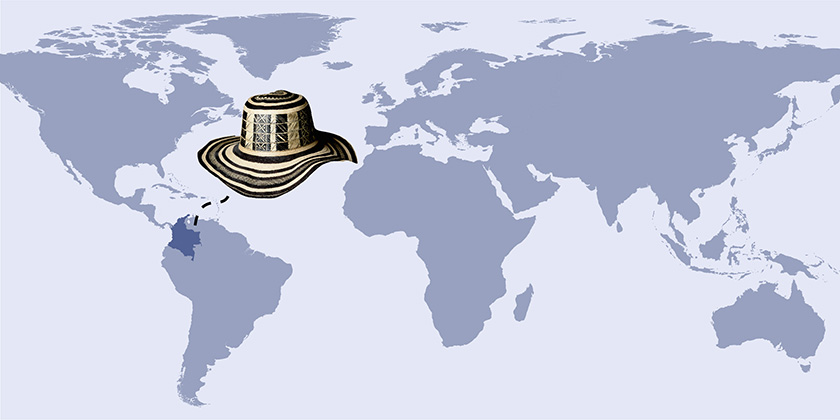
Sombrero Vueltiao
Click on Image to View Gallery
ABOUT
This sombrero (hat) is from the South American country, Colombia. Historically, the principal manufacturers of this garment were the members of the indigenous Zenú tribe, who settled throughout the Valley of Zenú along the San Jorge River and around the Gulf of Morrosquillo on the Caribbean coast of Colombia. Although this tribe is not well known in the United States, Pre-Colombian Zenú artifacts made from gold, stone, bones and snail shells can be found in museums. The most recognized Zenú symbol today is the sombrero vueltiao. Each sombrero is composed of a particular pattern, or pinta, woven from a tropical tall grass plant known in Spanish as caña flecha (gynerium sagittatum) or arrow cane. With the use of this plant fiber, artisans create the sombrero by weaving concentric circles called vueltas. The number of vueltas determines the sombrero’s monetary value, which is proportional to the amount of vueltas used to create the sombrero. The pintas located on the vuelta’s design tend to make reference to the origin of the world. The design can allude to natural elements, such as flora, that are often represented through geometric designs such as the totumo flower (circles and triangles), the passion fruit flower (triangles), and the corn spike (triangles with diagonal lines). These designs identify the wearer’s clan for the members of the tribe.
— Juancamilo Florez
ORIGIN
Colombia
APPROXIMATE DATE
Late 20th Century
MATERIALS
Caña Flecha
COLLECTION OF
Natalia Cortes

OTHER OBJECTS FROM THE EXHIBITION

